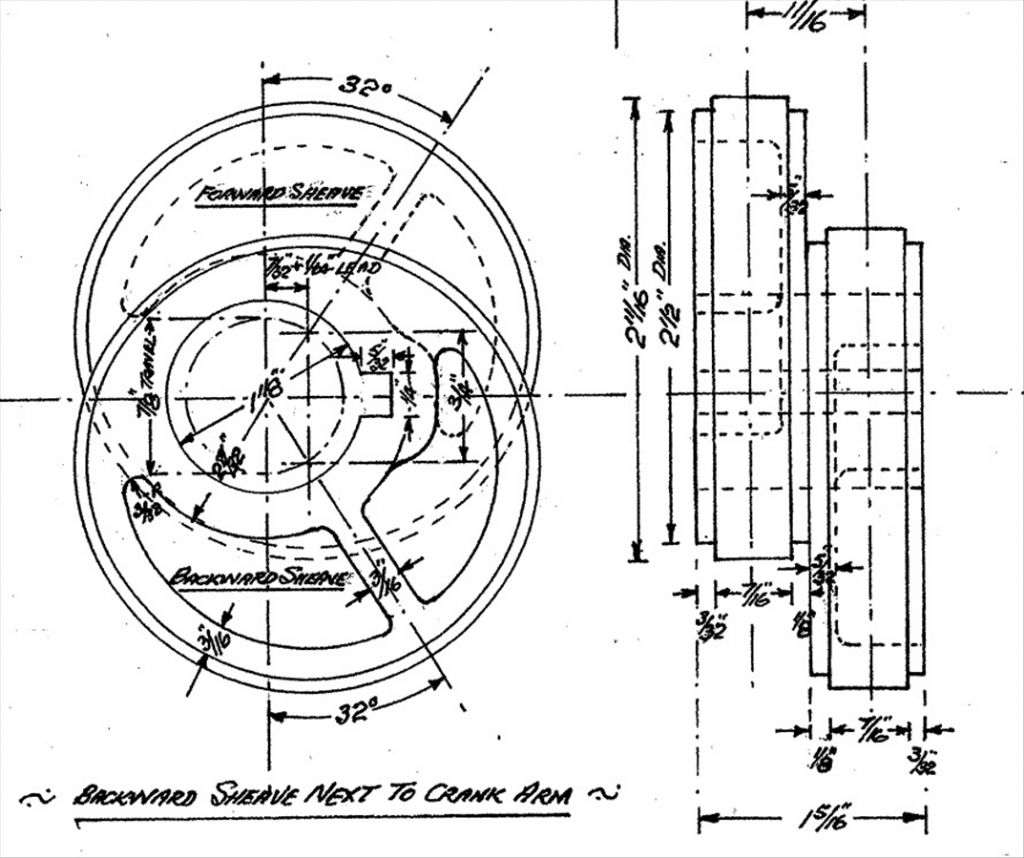The angle of advance is set by the designed lead (usually a tiny bit > 0 " as well as lap, so varies from engine to engine, but a bit over 30º seems quite typical for Stephenson's Link-Motion, full admission port openings and fairly late full-gear cut-off.
as well as lap, so varies from engine to engine, but a bit over 30º seems quite typical for Stephenson's Link-Motion, full admission port openings and fairly late full-gear cut-off.
In fact your drawing gives what appears to be the lap (7/32 " and lead (that ' +1/64'
and lead (that ' +1/64' . Which is quite possible as a traction-engine's engine itself, is designed to run fairly fast.
. Which is quite possible as a traction-engine's engine itself, is designed to run fairly fast.
If I recall aright, the angle of advance on LBSC's Maid of Kent with Ken Harris' version of its Stephenson's Gear is around 35º. A loco is designed to be driven at speed on a very early cut-off, and the effect of that link motion is to increase the lead with notching-up, especially beyond what appears typical for a traction-engine.
The usual plots for eccentric / crank geometry are the Zeuner or the Reauleaux Diagrams, or simplified versions, both quite easy to draw. They simply relate valve-travel to crank and eccentric positions at dead-centre, but not the port openings themselves, nor the full effects of all the bits of steel in between.
Nigel Graham 2.



 as well as lap, so varies from engine to engine, but a bit over 30º seems quite typical for Stephenson's Link-Motion, full admission port openings and fairly late full-gear cut-off.
as well as lap, so varies from engine to engine, but a bit over 30º seems quite typical for Stephenson's Link-Motion, full admission port openings and fairly late full-gear cut-off. 

